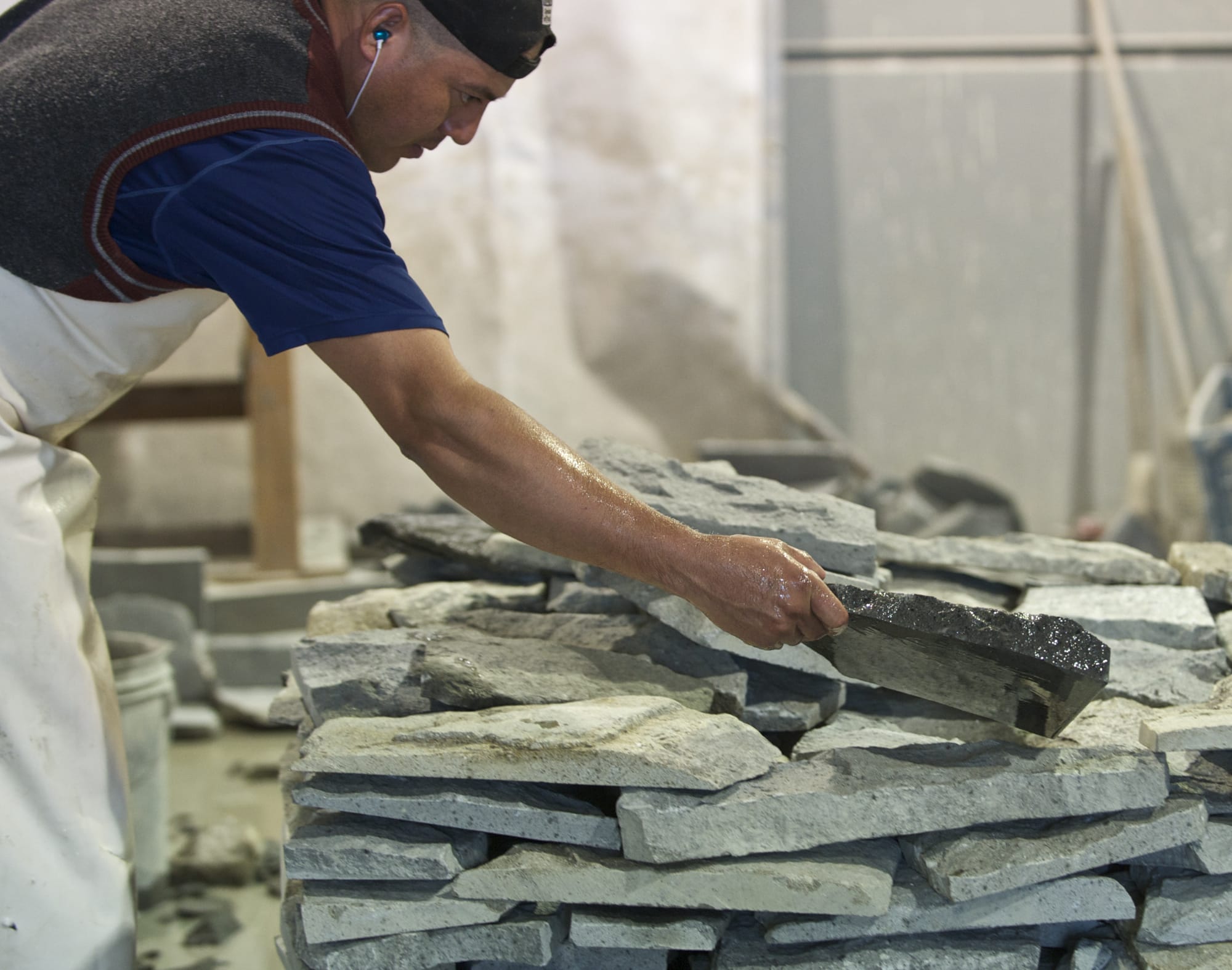Through August of this year, the City of Vancouver had issued a total of 67 demolition permits. And each building torn down likely resulted in loads of waste being dumped in landfills. In 2012, Washington produced 5.3 million tons of construction and demolition debris, according to a report by the state’s Department of Ecology.
Corado fine-tuned a process for cleaning the old bricks, then slicing off the face, or front, of each one. The resulting veneer of 1/2 inch to 5/8 inch thickness offers the look of a whole brick, but at a fraction of the weight, Corado said. Large expanses of full-depth brick are so heavy that buildings over one or two stories often have to be re-engineered to support the weight.
Today, DeCorado Stone & Brick stocks various veneers of bricks made between 1890 and 1952.
“Anything newer than that looks too modern,” Corado said.
So far, Corado has salvaged local bricks from old buildings removed from the Battle Ground High School campus, old hospitals and private homes. Many of the bricks in the area, he said, were manufactured by Hidden Brick, a pioneer company that operated in Vancouver from 1871 until 1962 and produced bricks for some of the city’s best-known buildings, including The Academy. Others came from Richmond Brick Company, of Richmond, Calif.
In some cases, Corado pays for the salvaged bricks. In other cases, people ask him to come and pick them up for free. In many cases, the owner saves money by not incurring the costs of dumping the bricks at a landfill.



